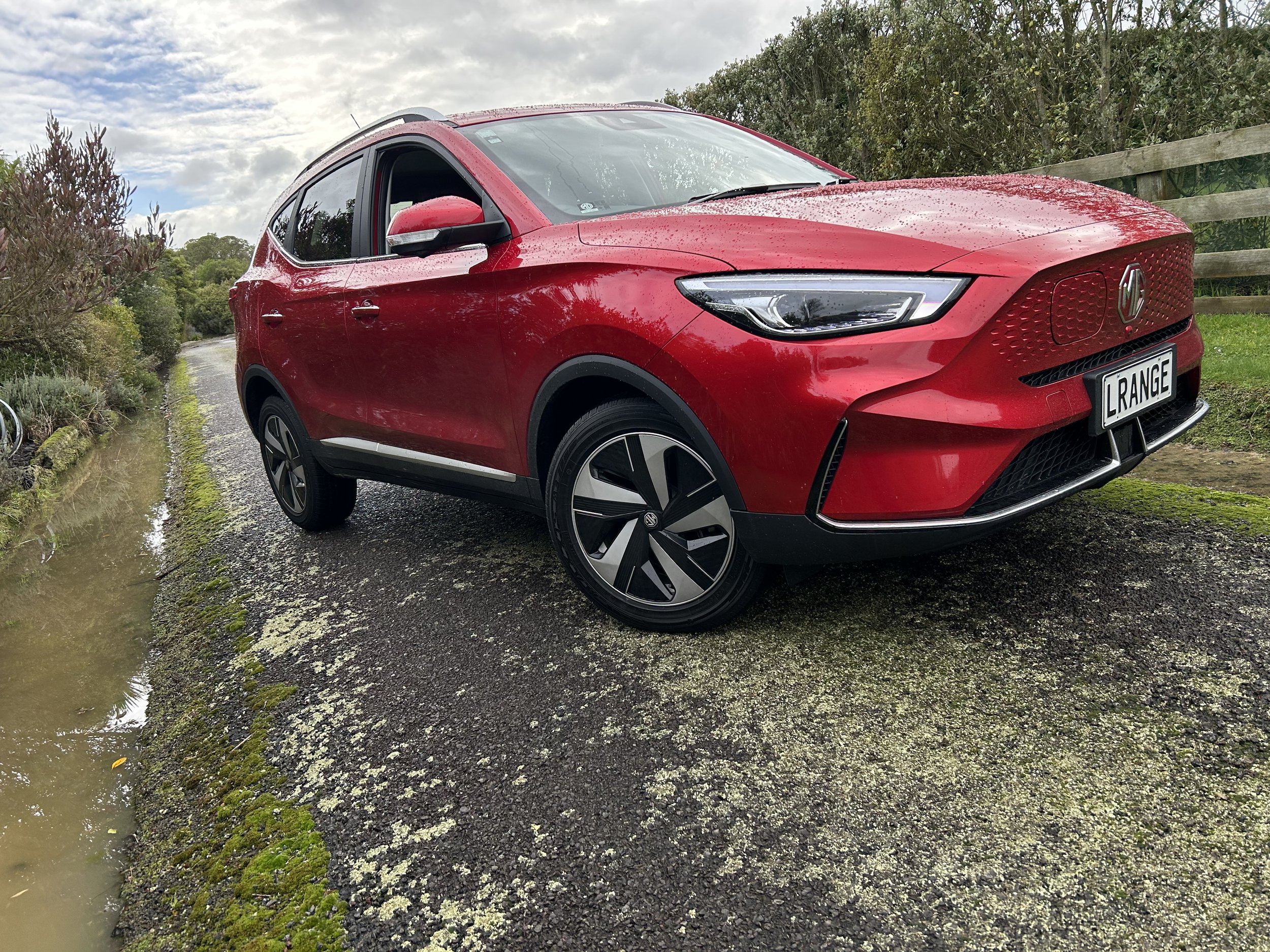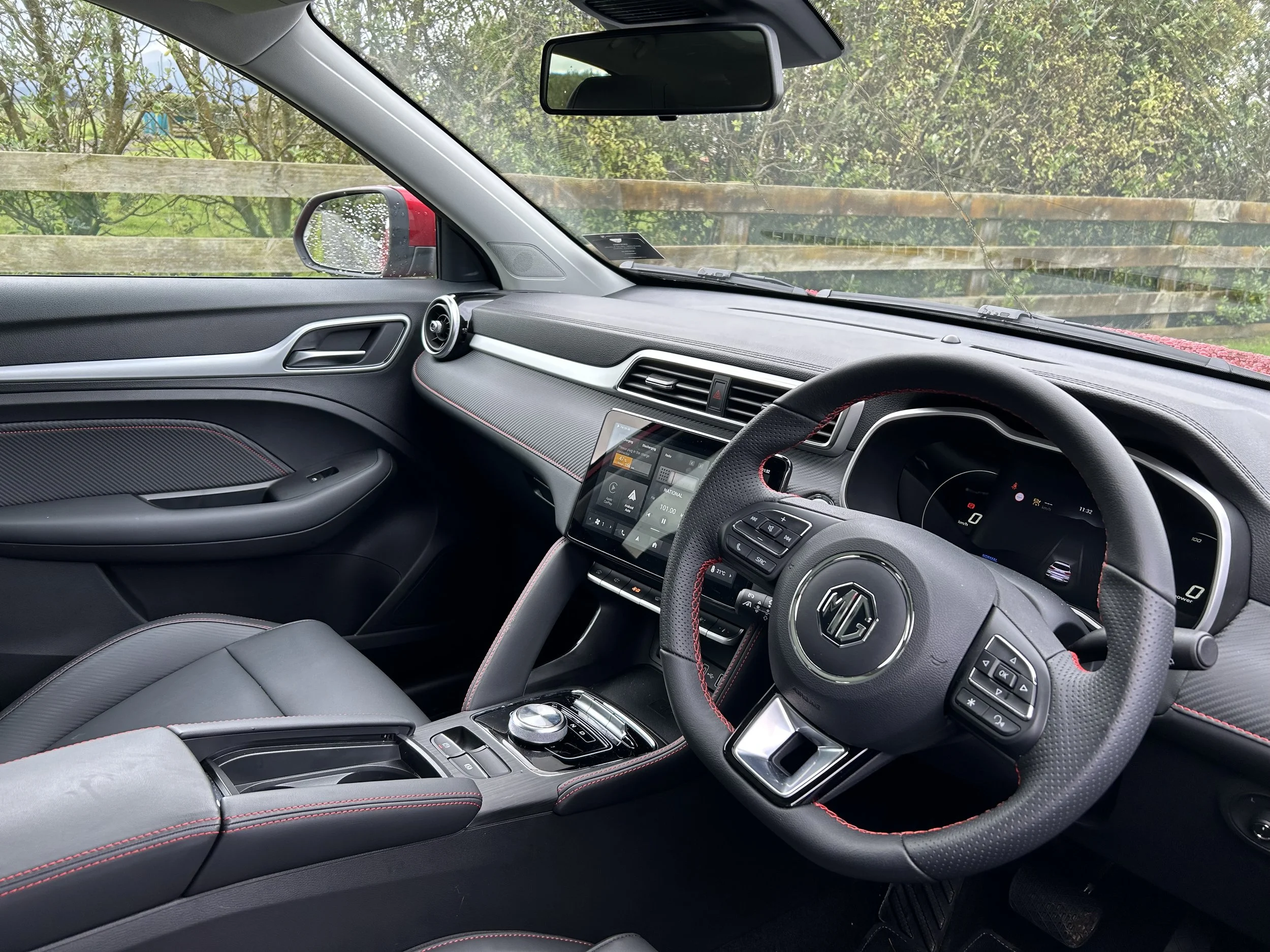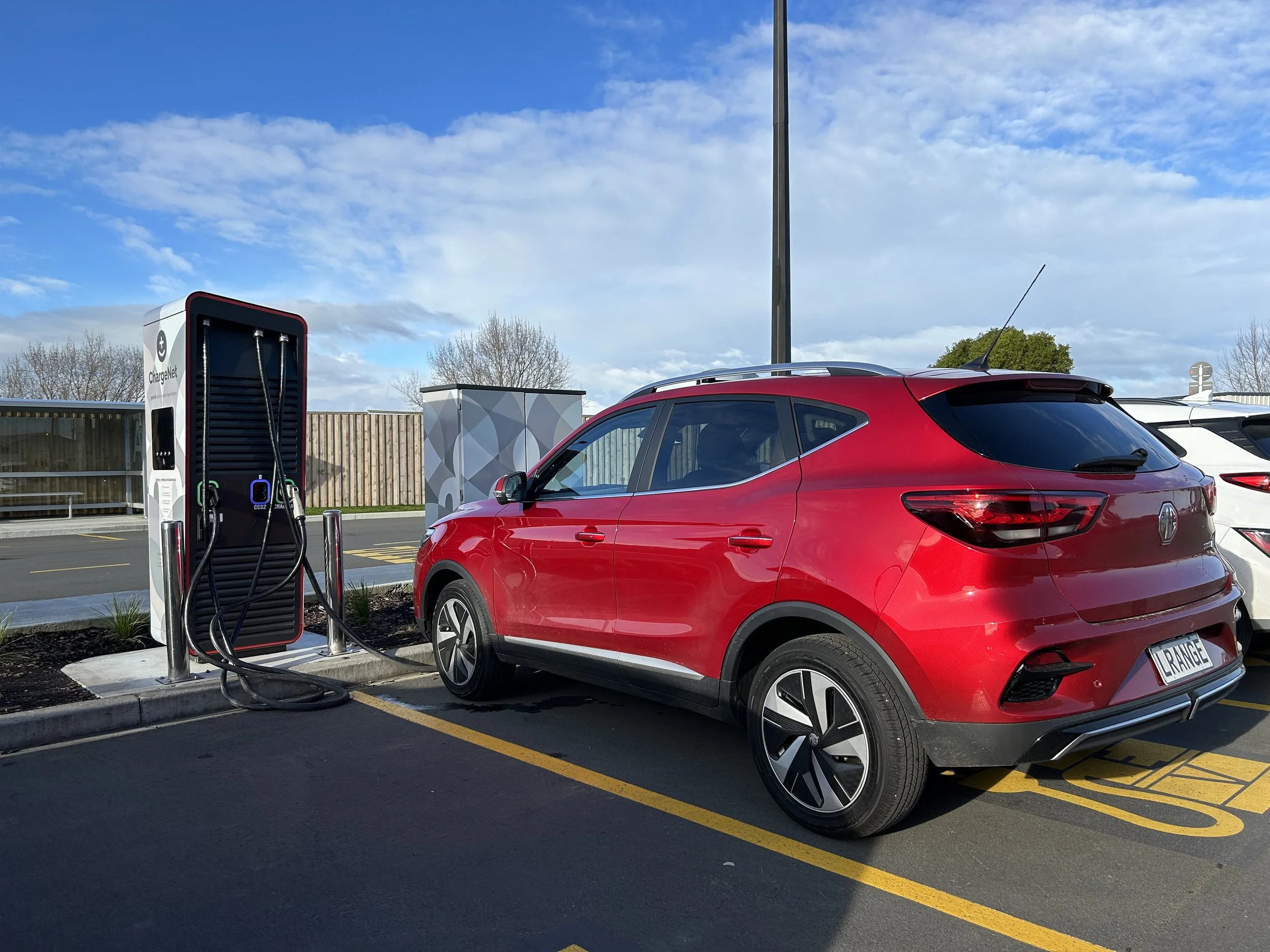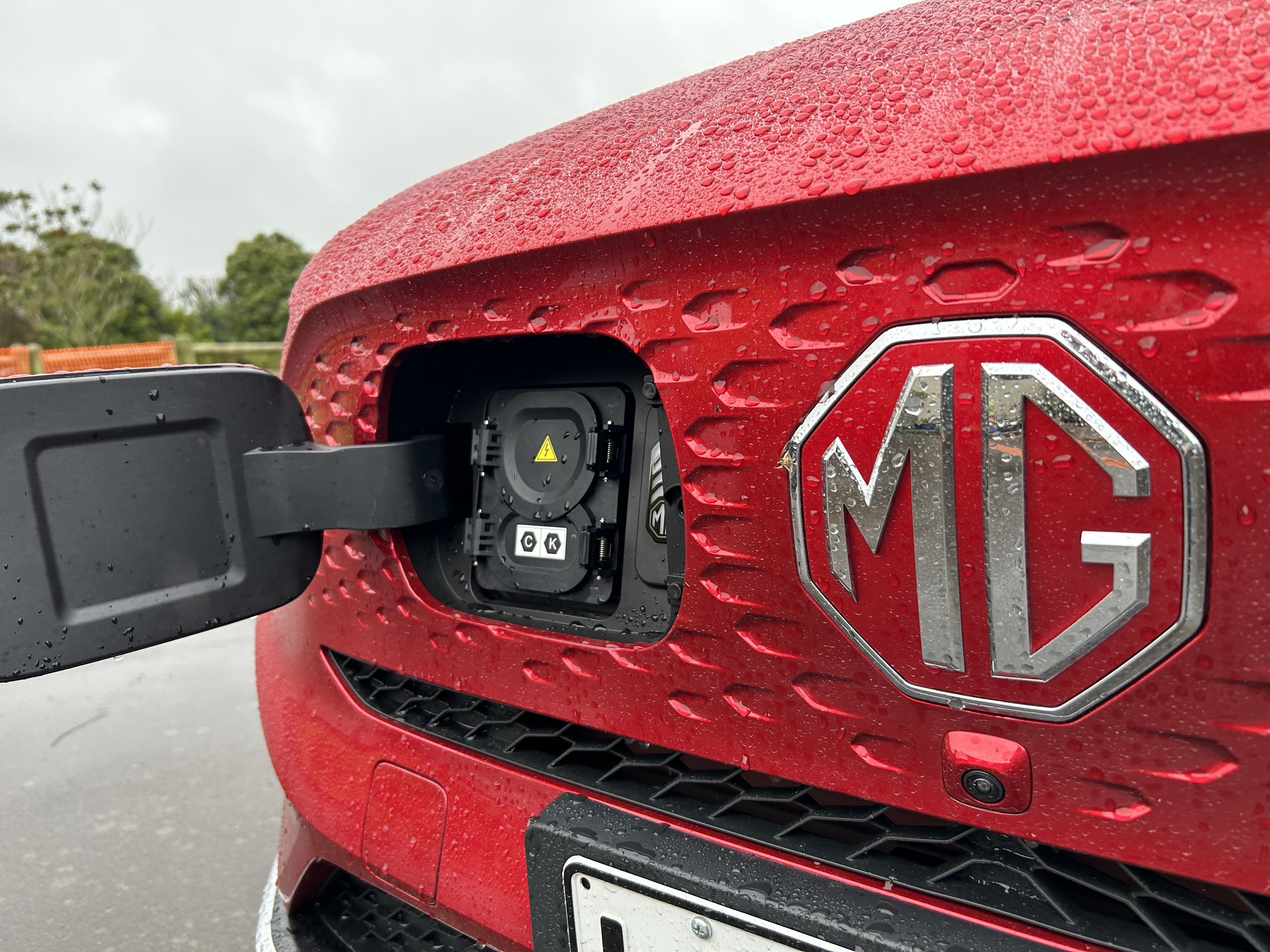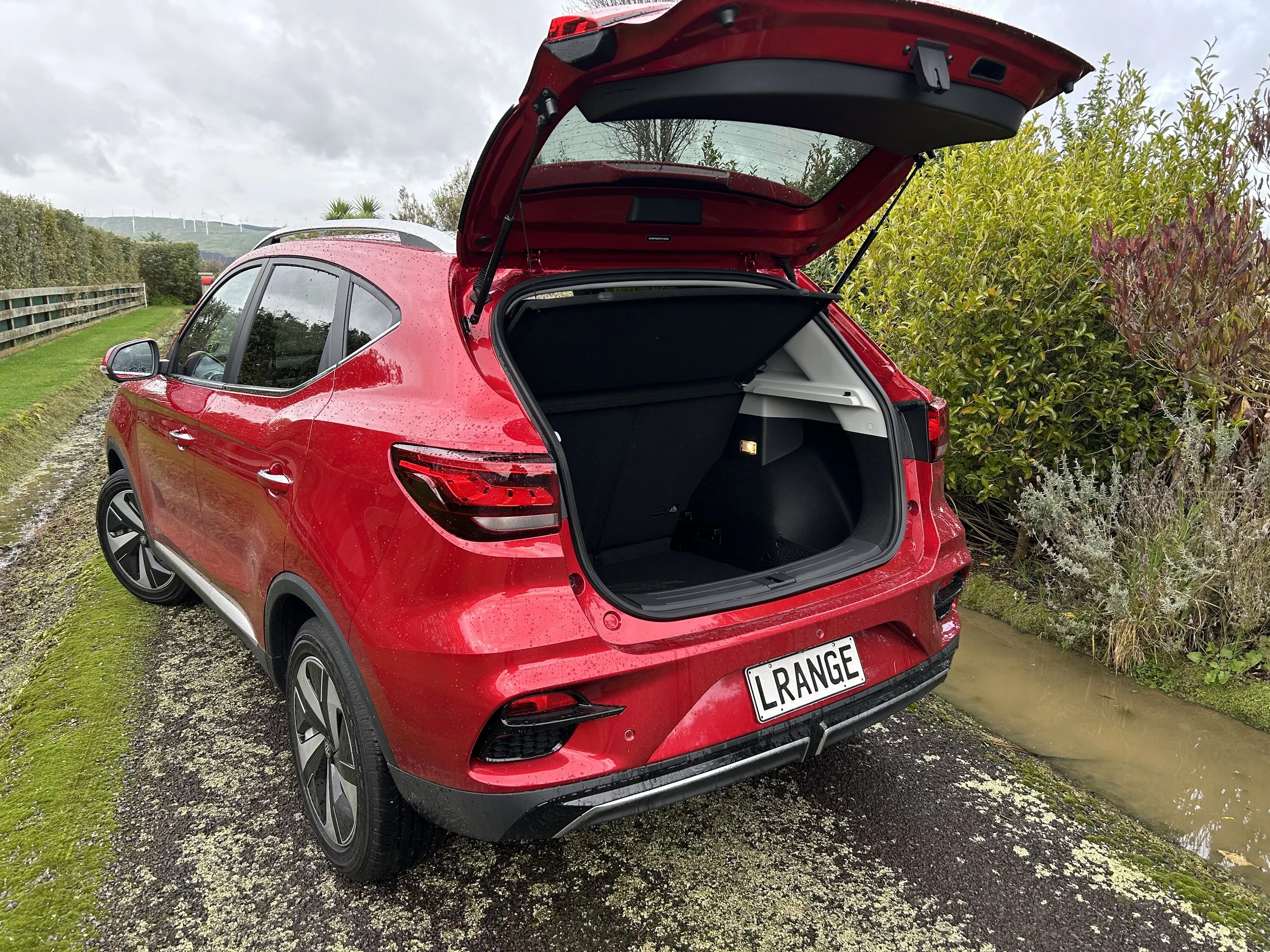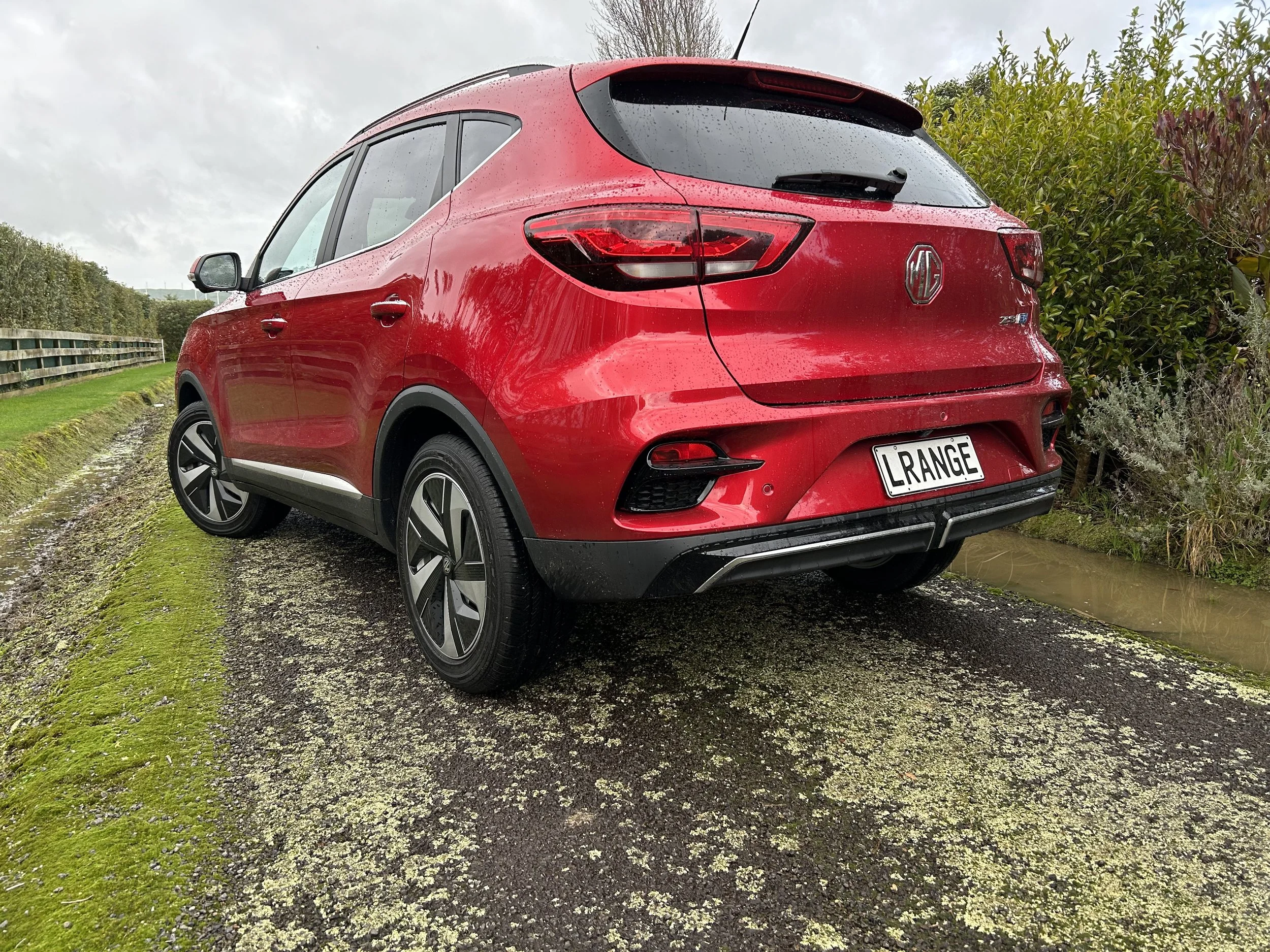MG ZS EV long range: More to offer, less to give?
/A bigger battery enhances a car of generally unassuming qualities, but at a time of fast-paced EV change, is it enough?
Price: $59,990
Powertrain and economy: Synchronous electric motor with 72kWh liquid cooled nickel manganese cobalt battery, 115kW/280Nm; energy use 17.7kWh/100km; claimed range 440km; automatic transmission; front-wheel drive.
Vital statistics: 4314mm long, 1644mm high, 1809mm wide, 2585mm wheelbase. Luggage space 359-1187 litres. 17-inch alloy wheels.
We like: Roomy cabin; new touchscreen; seven year warranty.
Not so much: More medium range than long; dating ambience; driving feel doesn’t really do the MG badge justice.
ELECTRIC passenger vehicle choice in the market now looks really reasonable yet though there’s now almost now something to meet any taste - if not very price - demand for the latest shiny new thing still seems insatiable.
Right now, the latest big thing is something compact and a bit edgy. It’s understandable why the MG4 has an attraction. It’s a car right-hook detail we’ve boned up on since last year, when it went on sale in the United Kingdom, 12 months ago.
A fresh platform and a new-era drivetrain, wrapped in an in-vogue look … it’s a big leap forward and said to be a benchmark-setting car for the British-turned-Chinese brand.
Now it’s arrived and reaction has been predictable: It’s the latest taste sensation … set to stay that way until the next new thing. Which will likely be a car on the Volkswagen Group MEB platform, since all those are rolling out around now, but could yet also be a BYD, or perhaps even something from comeback brand Chery.
Ostensibly, it is no direct threat to the ZS. Physically smaller and a street-sorted hatchback. Conceivably therefore aiming at a different buyer than the semi SUV-esque ZS. Different strokes and all that.
Well, yes. But you can see where the spotlight will now turn, regardless. Realsitically, the new car lends MG chance to climb back to the same place when it was in 2017; holding a golden ticket to the proposition that it’s a leading brand to delivering a value-minded electric driving experience. And the old? Well, it can trade on memories of when it was king.
Such heady days. Even though it seems like an age when it was lauded as the country’s least expensive new electric car and pulled crowds, that was in reality just a couple of years back. Remarkable how quickly times move on and tastes change, right?
But, it’s a fact. When ZS EV showed, it was one of a few. Now there’s so much more competition, so much more choice. Technology has ramped up. Prices have fallen all the more. We’ve moved on.
If this ‘long range’ edition represents as the last version of the current ZS, it’ll step out with degree of dignity intact.
All signs are pointing to the end being relatively near, and not because it’s in sixth full year on the job - and that’s in pure electric form, the petrol it derives from has basically had eight birthday cakes since achieving New Zealand residency.
The Chinese-owned British brand has also shared intent for a complete model line shake up by the end of 2024. Check the glovebox. You might well find retirement home brochures.
There’s been a lot of talk the next ZS will shift to the MG4’s modular, scalable electric car-only MSP platform and deliver the same styling, but in larger scale. That would mean a couple of battery options and the potential for four-wheel drive, as well as serious improvements to in-car tech and quality. That seems a good idea to me.
As is, the car post-facelift jogs on as it always has; as a conservatively designed choice with a driving experience erring more toward the ‘okay’ than outstanding that plays more of practicality and family affordability than outright panache.
Looking and kitting out better than it used to, thanks to a modest facelift last year, is helpful to keeping it on consumer shortlists. likewise that the test example was subject to a July-implemented $5000 price cut.
Trimming the sticker to $59,990 and conceivably making it a $52,975 choice, assuming full $7015 Clean Car rebate eligibility, was a welcome revision, albeit a no-brainer. Had it not altered, this model would have sited $1000 above the top MG4, the Long Range 77. A ludicrous proposition.
As is, this car, and the Excite and Essence respectively in $49,990 and $53,990 standard range formats still conceivably will have to stand comparison with the MG4 in its Excite and Essence grades, respectively at $46,990 and $51,990 and at $54,990. All before rebate, obviously.
If you’re buying in, it’ll be foremost on pragmatic grounds. Last year’s styling revision delivers a new headlight design but the basic dumpy shape that was when new a clear riff off the previous Mazda CX-5 is unaltered. At least you no longer have to fear for the longevity of the charging port cover. On the original, it was the octagonal MG badge, and decidedly flimsy. Now it’s still on the face, but offset, and far more robust.
The car having come from an era when MG owner Shanghai Automotive put great store in creating value-focused cars reflects strongly in the cabin.
There’s enough kit – even a full-length sunroof - to leave it seeming semi-premium on paper. In reality, though it just reminds how cost-effective it is for Chinese brands to include ‘prestige’ elements in a cabin that, for all the fineries, struggles to impart a truly quality feel.
Implantation of a big new touch screen was the one major change for this year. It definitely stands out as the most modern ingredient in a setting that otherwise delivers limited design flair. Still riding along are slightly flimsy controls, a driving position the tall will find flawed - as result of it lacking steering column reach adjust and the seat, though comfy, being set too high - too many hard plastics and the ‘leather-like’ seat trim that isn’t.
The new touch screen is an improvement. The prompts are not necessarily any more immediately intuitive, but the home screen is much better resolved in appearance, plus functionality is quicker and resolution sharper. Of the graphics, that is. The pity is that, as a viewing portal for reversing, the picture is poor because the camera itself remains of mundane quality.
The in-built sat nav is reasonable, but the improved connectivity for my Apple phone (it’ll also support Android) phone was such that I tended to still favour Google maps. This year’s car also provides a phone charge pad that worked sometimes, but not always, and a recording function for the front view camera.
In respect to family usage, it still delivers as strongly as ever. You get expansive forward and side glass that makes for plenty of legroom, headroom as well as all-round visibility. That panoramic sunroof also enhances the sense this is not just among the roomier cabins in the small SUV class but also the airiest.
Boot space sets no outright records, but with the back seats in use it is easily large enough for the shopping or other urban errands and the seat backs fold if you need to load longer or larger items. It’s not a flat-load floor as batteries house under the rear seat. The cargo space is deep because there’s no spare wheel; just a tyre-repair kit. It lives under the boot floor with the home charge cable.
Like many electric cars, the ZS EV is brilliantly easy to drive. Turn it on, select drive with the simple rotary controller, press the accelerator pedal and you’re away.
In respect to performance, it’s a solid performer. Like all electric vehicles, it pulls away quickly from a standing start thanks to the almost instant torque, it’s no blazer. It holds open road pace but loses some momentum on ascents. Sport mode adds some zing, of course, but careful who you throw down gauntlets to. There’s some drivetrain noise, mainly shrillness under load, and road roar on coarse chip is more evident than in some others.
There’s nothing in the dynamic that particularly tries to live up to the old MG sports car image. It feels stable and corners neatly, but what it appreciates more than anything else is a relaxed driver. As noted with previous editions, the steering feel is a bit odd - too light in regular mode, artificially heavy in Sport setting - braking performance is measured and the low-resistance Michelin rubber trades off some grip, to point where a degree of wariness on wet roads will seem prudent. The ride quality is busy and loses comfort over lumps and bumps. There’s some surface and wind noise to contend with. MG doesn’t seem to have used the refresh as opportunity to enhance the sound proofing or improve the door seals.
The requirement for a bit more polish in those areas is far less obvious when it sticks to town. There the drivetrain responsiveness is smooth and willing and even in the highest of the three regenerative settings, the deceleration is smooth and controlled. The excellent visibility and tight turning circle are also more appreciated.
However, as much as the temptation to run it as a family bus for short, inter-urban zipping around will sit firmly in your mindset, there’s that whole 'long range’ thing to consider, right?
That mantle comes as result of this ZS dropping the cheaper editions’ 51kWh lithium iron phosphate battery in favour of a 72kWh NMC (nickel, manganese, cobalt) power pack. A 41 percent increase in battery capacity delivering for a 37 percent increase in range seems decent. Assuming you take the WLTP-cited 440kms’ endurance seriously.
As is almost always the case, here’s another example where it’s best not to. That distance was certainly not in the test car’s remit.
With it, replenishment after having put 335kms on the odometer seemed prudent. To be fair, even that kind of outcome is good for a ZS. The standard battery car, from our past experience, is substantially less useful. Still from this exposure, ‘long’ range is really more toward the medium. How will that compare with the MG4 Long Range, which according to the make has a 90km advantage on that manufacturer optimal? It’ll be interesting to find out. In the meantime, if you take the ZS, it’ll be fine for distance driving, but expect to plot in two replenishment stops if, for instance, attempting something like a Auckland-Wellington run.
The battery exchange has an interesting impact on the ZS motor output; MG cites a 15kW drop in max power to 115kW. Do you feel that? I couldn’t. This variant stepped off as smoothly and as suavely as any other. The NMC battery car is 10kg heavier, but again it’s not a thing to be concerned by; ZS in any form is a bit of a porker, with a heavier feel than the claimed 1620kg evidences.
The only noticeable difference is in recharging. MG talks a remarkable 35 hours’ replenishment time if you’re digging electricity into it through the supplied three-pin plug kit.
That’s on par with the entry Ford Mustang Mach-E, which has a substantially larger battery. Get a wall box and the charge time reduces to 11 hours. Ten to to 80 percent on a 50kW DC charger is said to take an hour, or 37 minutes if you can find hypercharger, though uptake tops out at 150kWh.
Whichever the way, there’s plenty of time for a coffee and chance, if at a public utility, to make new friends.
Some might be turning up in similar-sized, newer-generation cars with reputation for generally being more fulfilling to drive. That the ZS demands more consideration now than it might have just a couple of years ago is simply a reflection of the advances occurring in this class.

